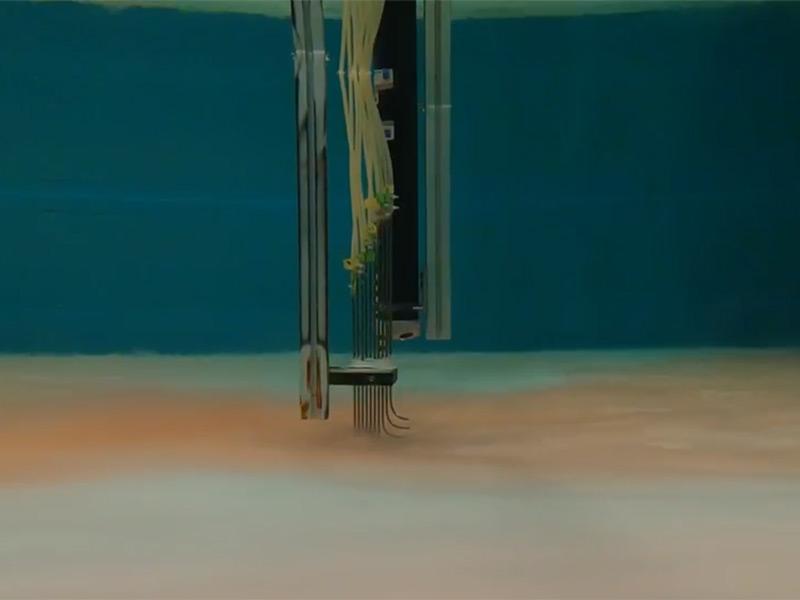Researchers develop new method for studying ‘underwater avalanches’
On the continental slope under the ocean, turbidity currents move more sediment than any process on Earth. These “underwater avalanches” move incredibly fast and can be difficult to measure.
In a new study published in Nature Communications, researchers at Tulane University, led by PhD student Kevin Reece, developed a new method to study turbidity currents in three dimensions in a laboratory setting. This new method is useful because previous laboratory studies generally used two dimensions, resulting in an incomplete picture of the currents’ behavior.
This research is particularly important for understanding how pollutants like microplastics are transported underwater and how hydrocarbon reservoirs, where oil and gas accumulate underground, form.
“A lot of people from a lot of different backgrounds are interested in these systems,” said Reece, “ranging from climate studies to environmental studies, to industry and hydrocarbon studies.”
The study looks at how these currents interact with minibasins, natural features that look like shallow bowls and can be as large as 10 square kilometers in area, or about twice the size of City Park.
As the currents pour into minibasins, they hit the far side of the minibasin and curl around. “It’s kind of like a little eddy,” said Reece. “If you’ve been to a stream or something like that, you see these flow structures that curl back in.”
Those flow structures are called circulation cells. The circulation cells move the sediment in the currents around before they eventually settle on the ocean floor.
The size of the minibasin and the speed of the flow both impact how these turbidity currents behave. “If you have a flow that comes into a very large bowl, it starts to fill,” said Reece. “Then if you increase the flow size or decrease the size of the basin, it starts to bleed out a little bit.”
If the flow speed increases enough or the size of the basin is small enough, the current simply spills over the basin without leaving sediment. It instead skims over the minibasin, like a rock skipping over the surface of a pond. The spectrum of results is what the researchers call the fill-strip-spill spectrum.
The researchers created a scaled-down version of a minibasin in a pool and used a controllable influx current to represent a turbidity current. They looked at how the current interacted with the minibasin at three different velocities: low, medium and high. They also created their own sediment mixtures with specific proportions of different sizes of particulates. This controlled environment allowed the researchers to make the model as close to reality as possible, on a smaller scale.
“I went in and hand carved this circle, our minibasin,” said Reece. “The geometries were all extracted from bathymetric data of the northern Gulf of Mexico margin, which is in our backyard.” Bathymetric data is data about the topography of ocean floors and riverbeds.
This is only the beginning of potential research into turbidity currents, Reece said. “There’s a lot of different research that could be based on these initial results,” he said. “Other scientists can run with it and take it where they please.”

